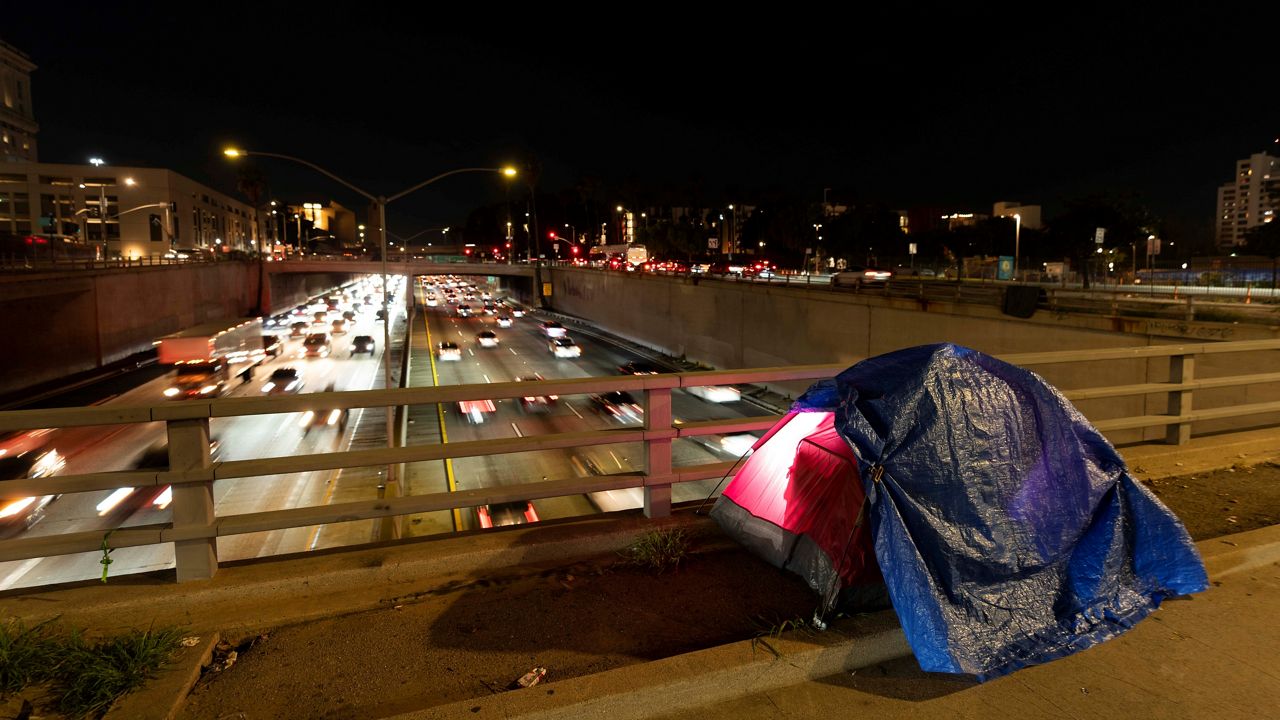LOS ANGELES (CNS) — Arrests for violating the Los Angeles law prohibiting sitting, lying, sleeping or placing personal property on sidewalks continue to rise, according to a report released Thursday by City Controller Kenneth Mejia.
What You Need To Know
- The figures continue a steady climb in the number of Southland homeless people over the past five years
- Meija's report notes half of arrests are misdemeanors and claims the ordinance is "unevenly enforced across council districts with little relation to the number of unhoused people per council district"
- According to the report, there were 558 arrests in 2021, 853 in 2022, and 1,582 through Sept. 15 related to violations of the Municipal Code section
- The council approved a motion by Councilwoman Katy Yaroslavsky in April to analyze the effectiveness of the anti-camping law. The study has not been released
The analysis of Los Angeles Police Department arrest data of alleged violators of Section 41.18 of the Municipal Code from January 2021 through Sept. 15 ties the increase in the Southland's homeless population to the increase of arrests since 2021.
According to the results of the point-in-time 2023 homeless count conducted in January, there were 75,518 people experiencing homelessness in Los Angeles County, and 46,260 in Los Angeles, compared to 69,144 in Los Angeles County in the 2022 count and 41,980 in Los Angeles.
The figures continue a steady climb in the number of Southland homeless people over the past five years. In 2018, there were 52,765 homeless people counted in the county, and 31,285 in the city.
Meija's report notes half of arrests are misdemeanors and claims the ordinance is "unevenly enforced across council districts with little relation to the number of unhoused people per council district."
LAPD did not immediately respond to a request for comment. According to the report, there were 558 arrests in 2021, 853 in 2022, and 1,582 through Sept. 15 related to violations of the Municipal Code section.
Council District 12 — which includes portions of the northwest San Fernando Valley — has the highest number of arrests related to the anti- camping law this year, with more than 800, while Council District 1 -- which includes parts of northeast and northwest downtown Los Angeles, is second with more than 200, the report says.
"We are utilizing all tools and resources available to confront the humanitarian crisis on our streets and upholding the city's responsibility to ensure that public areas remain safe, clean and accessible," Councilman John Lee, who represents the 12th District said in a statement.
"We are continuing to bring housing beds online and partnering with the county to provide mental health and substance use services, and will always lead our efforts with outreach first."
Lee was one of the original proponents of anti-camping ordinance. According to his office, Lee never "viewed the anti-camping zones as a half- measure," and believes these zones "only work" if enforcement is consistent.
In the four years since Lee has taken office, he opened nearly 200 beds of interim housing with nearly 270 interim and permanent supportive beds in the pipeline scheduled in the next 18 months, according to his office.
Councilwoman Eunisses Hernandez, who represents the First District, who has previously stated that anti-camping law is not an effective mechanism to address homelessness, often creating additional barriers to receive the proper resources.
Since taking office, Hernandez has not designated any areas as anti-camping zones, according to her staff. Areas in First District that have been designated were either set by her predecessor, Gil Cedillo, or the ordinance creating the Municipal Code section, according to her office.
"This data shows that we cannot criminalize our way out of the homelessness crisis. The number of arrests has increased each year since 2021 and yet so have the number of people who are experiencing homelessness in our city," Hernandez said in a statement.
"In CD1, there are a significant number of 41.18 arrests in the MacArthur Park area, and yet, if you visit the area today, you can see this approach is failing to meet the needs of our neighborhood. Criminalizing homelessness leads to increased barriers of entry as we are trying to bring people inside.
"Effectively addressing our homelessness crisis requires a redirection of our resources into housing and care-first solutions."
The council approved a motion by Councilwoman Katy Yaroslavsky in April to analyze the effectiveness of the anti-camping law. The study has not been released.
The districts with the highest number of unhoused individuals were the 14th District, which stretches from downtown to the Eastside, with 9,204 unhoused people, Ninth District in South Los Angeles and downtown with 5,640, Eighth District in Western South Los Angeles with 3,579, First District with 3,395 and Sixth District in the Eastern San Fernando Valley with 3,328.
The data on homelessness was obtained from the 2022 Los Angeles Homeless Count, according to the controller's office.
In July 2021, the city amended its anti-camping law in an attempt to comply with the 2018 Martin v. Boise ruling, which prohibits cities from enforcing anti-camping laws without enough shelter beds.
Additionally, 52% of all arrests were misdemeanors, which can lead to jail time, the report says. These types of violations can be cited as either infractions or misdemeanors.
Infractions can lead to a fine, while misdemeanors can result in a fine plus up to six months in jail.
The controller's map offers a breakdown of arrests related to the anti- camping law by race, year, City Council district, type of arrest and time of day.



